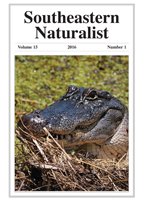Myotis grisescens (Gray Bat) is a federally endangered species distributed over the mid-South with a summer range that extends across the upper Tennessee River Basin, including southwest Virginia. Given the onset of White-nose Syndrome (WNS) in the Commonwealth in the winter of 2009, we initiated yearly surveys in late summer 2009 to monitor the status of known summer populations. Our objectives were to examine the relative health of these bats using body mass index (BMI), and determine any changes in juvenile recruitment across sites and years. We did not find any marked changes in BMI across years after WNS for Gray Bats. This finding suggests that surviving bats are either not negatively impacted by WNS or have recovered sufficiently by late summer as to not document obvious differences across years. After limiting our analyses of juvenile recruitment to only the individuals that we had definitively aged via backlit photos (2010–2014), we found a non-significant declining trend in juvenile recruitment; a trend that merits continued monitoring in the years to come. As Gray Bats have only recently shown to be susceptible to WNS infection, it is possible that observable population declines are forthcoming.
How to translate text using browser tools
1 March 2016
Monitoring the Status of Gray Bats (Myotis grisescens) in Virginia, 2009–2014, and Potential Impacts of White-Nose Syndrome
Karen E. Powers,
Richard J. Reynolds,
Wil Orndorff,
Brenna A. Hyzy,
Christopher S. Hobson,
W. Mark Ford
ACCESS THE FULL ARTICLE

Southeastern Naturalist
Vol. 15 • No. 1
March 2016
Vol. 15 • No. 1
March 2016




